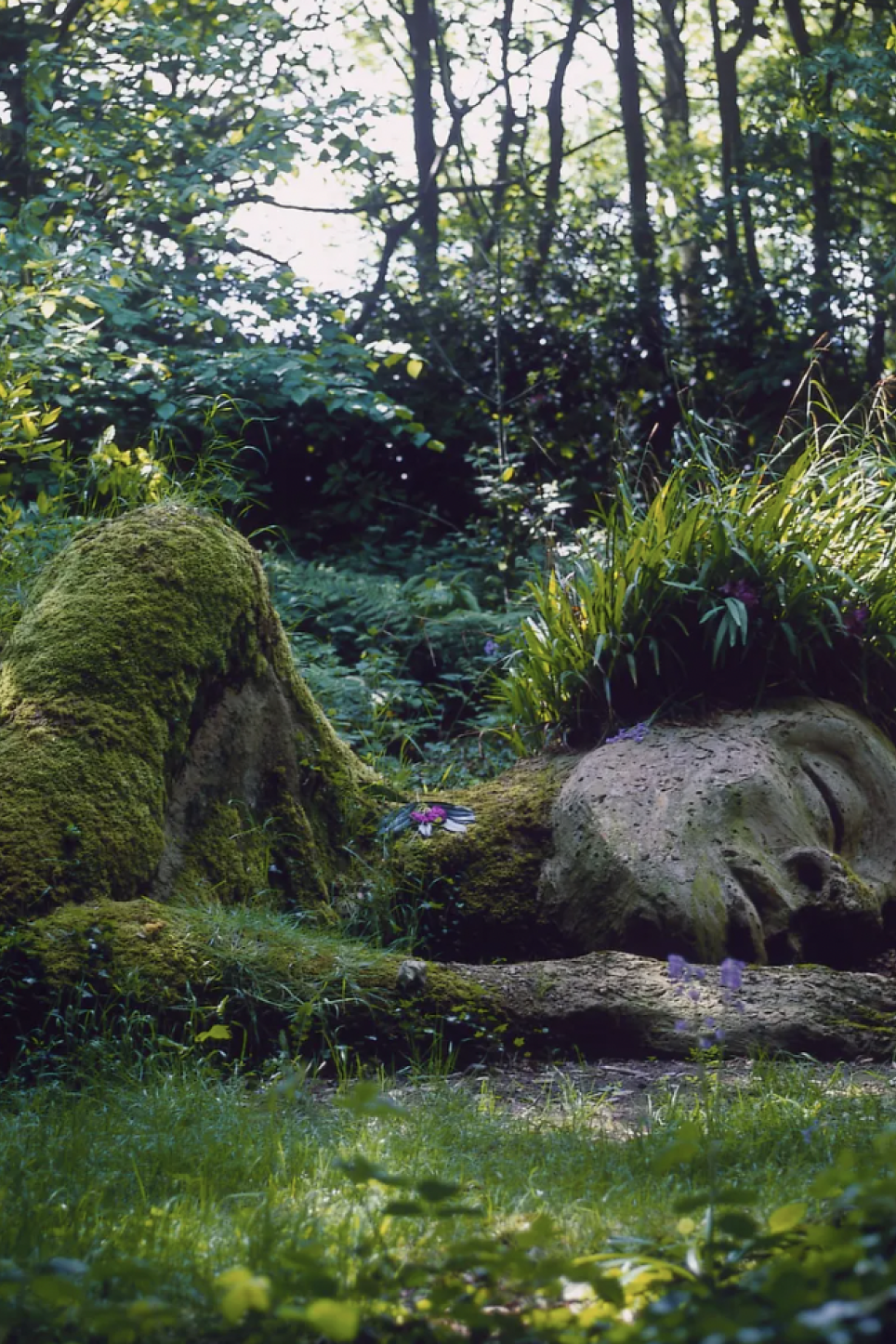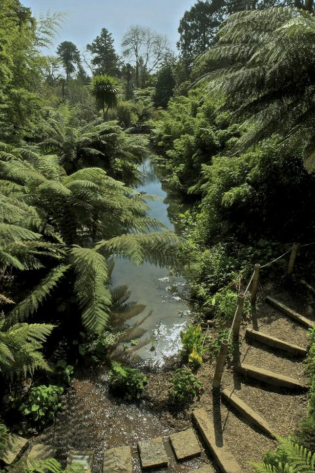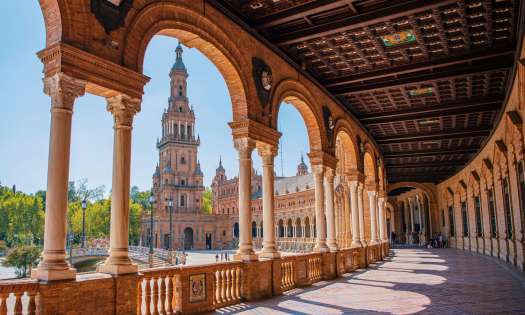By
Hazel Fulton
on
8th March 2023
The deeply romantic Lost Gardens of Heligan were woken from their Sleeping-Beauty slumber 30 years ago. Visit them in the coming weeks to see them burst into cinematic colour.
Imagine the excitement Tim Smit and John Willis must have felt discovering the overgrown gardens of Heligan in 1990, over 70 years since they were abandoned when WW1 broke out and the 22 gardeners that tended them were sent off to fight. Picking their way through decades of untamed brambles and ivy, the pair found vineries and greenhouses, replete with rusting scissors, teakettles and half-filled coal buckets. On the wall of the gardeners’ toilet, still visible in pencil, the gardeners had written their names in 1914 just before they left for the trenches. Only a fraction of them returned.
Smit is the ex-record producer responsible for the Eden Project, and Willis a descendent of the Cornish Tremayne family who owned the estate. They knew they’d stumbled on something magical, and set about restoring the site from decay and neglect to the paradise it had been before the Great War. Successive generations of Tremaynes had expanded and evolved the gardens during their 19th century heyday, filling them with exotic specimens the Victorian plant hunters brought back from the new worlds.
Unbelievably, many of those plants survived their years in the wilderness. Shrouded in a blanket of weeds, they grew undisturbed in the fertile soil and wet, mild weather of the South West, some of them to record sizes. The restoration team painstakingly untangled them, restored the buildings, and uncovered miles of winding paths, to reveal an extraordinary natural wonderland; a pleasure garden frozen in time. Now visitors can experience the Italian garden just as the last Tremayne squire designed it. The wild jungle area, created in the humid microclimate of a valley, is filled with the same subtropical tree ferns, bananas and giant rhubarbs that were planted over a hundred years ago. Of course there have been advancements: today visitors can take Insta-worthy pictures of the jungle from the 100-feet high rope bridge that crosses it.
Spring comes early to this corner of the UK – sometimes weeks before everywhere else. The Himalayan magnolias will be the first to burst into life, sometimes by the end of February; their huge candyfloss pink flowers filling the bare branches in spectacular fashion. Then come thousands of Cornish daffodils and carpets of woodland bluebells. By April, the ancient rhododendrons – some now as tall as a five-storey building – are smothered in crimson and magenta blooms.
And for those who prefer gastronomy over horticulture, there’s The Lost Suppers: occasional evenings hosted in the Kitchen Conservatory where chef Nat Tallents serves up the seasonal produce of the walled gardens. His tasting menus celebrate the deep connection between the land and the ingredients – and the work of those gardeners who never made it back.
Where to stay when you visit
The Llawnroc Hotel
This luxury small hotel, just five minutes’ walk from the beach in the peaceful village of Gorran Haven, offers spacious rooms, ocean views and breakfasts cooked to order.
The Cornwall Hotel and Spa
Experience total relaxation in this lovingly restored 19th century manor surrounded by 43 acres of woodland. Guests can enjoy the spa, gym and infinity pool, as well as an award-winning restaurant.
The Lugger
For Cornish charm, try The Lugger: a 17th century inn situated at the foot of a picturesque cove, right on the water’s edge. Its restaurant is the perfect place to enjoy the freshest local seafood.
The Lost Gardens of Heligan
B3273, Pentewan,
Saint Austell,
PL26 6EN














